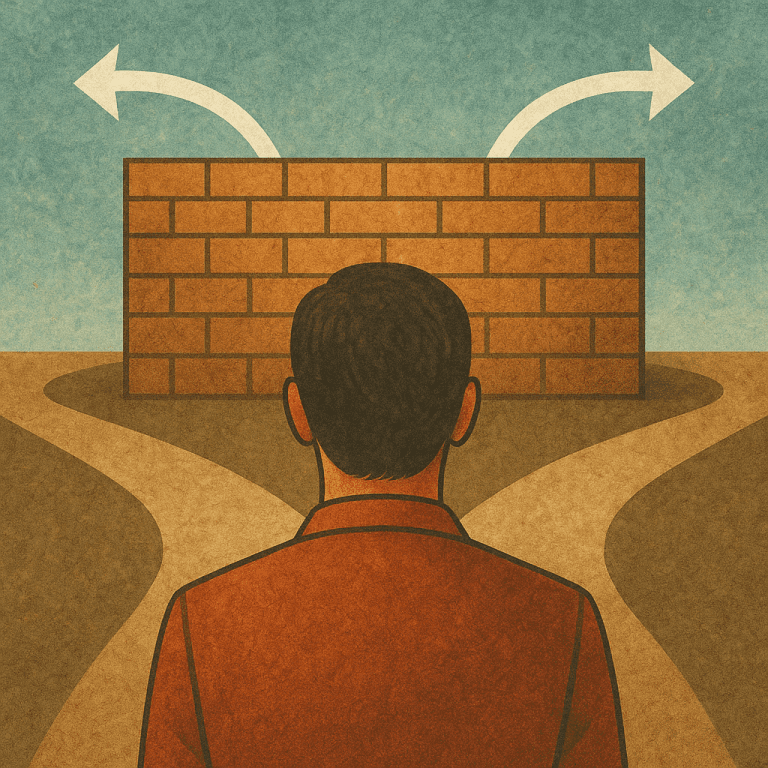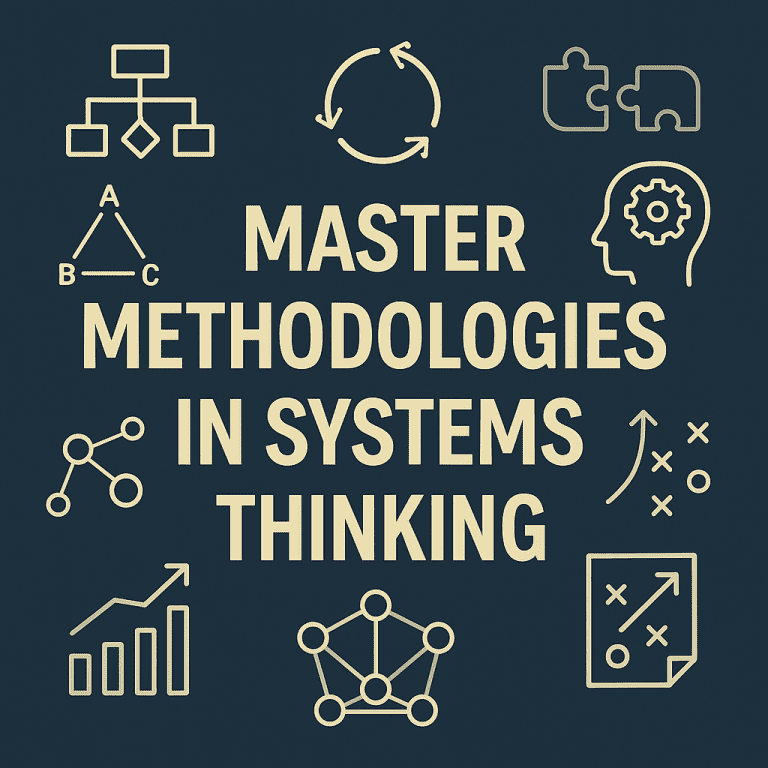How Healthy Systems Survive, Shift, and Grow
Some systems survive turbulence. Others crumble under pressure.
Some companies bounce back stronger after crises. Others spiral into chaos at the first sign of disruption.
What makes the difference?
It’s not just strength. It’s not just speed.
It’s resilience — and the deeper logic of adaptive systems.
In this post, we’ll explore how resilient systems maintain coherence while adapting to change. You’ll discover how self-organization, hierarchy, and smart subsystem design contribute to long-term health — whether in nature, organizations, or even yourself.
🌳 Resilience: Stability Without Rigidity
At its core, resilience is the capacity of a system to absorb shocks, adapt, and continue functioning — sometimes even transforming in the process.
It’s not about resisting change or simply enduring a hit.
It’s about recovering from it. Learning through it. Evolving with it.
Think of it this way:
- A tree bends in the wind but doesn’t break.
- A startup pivots its product after receiving critical market feedback.
- A community reorganizes post-disaster to meet its needs more effectively.
These aren’t just reactions — they’re signs of deeply intelligent, adaptive systems.
In resilient systems:
- Tension signals feedback, not failure.
- Redundancy is a buffer, not inefficiency.
- Diversity is adaptive capital, not noise.
🔍 Consulting Insight:
When a client says, “We just want to go back to normal,” your systems lens prompts a deeper reflection:
“What has your system learned under pressure? What’s truly worth returning to — and what’s now ready for redesign?”
🔁 Self-Organization: Order Without Command
Self-organization is when coherent order arises from within — without a top-down directive.
It’s how:
- Ant colonies build complex structures with no central architect.
- Open-source communities create powerful software without a CEO.
- Teams improvise and develop new processes when the old ones fail.
This is not chaos. It’s adaptive intelligence emerging locally.
Healthy self-organizing systems:
- Trust their people and distributed intelligence.
- Create space for experimentation and initiative.
- Rely on rapid feedback loops over slow command chains.
- Reconfigure roles and routines based on evolving needs.
👁🗨 Consulting Lens:
When you see an organization frozen without permission or panicked without a plan, you’re seeing over-dependence on central control.
Your role isn’t to give them a new top-down plan. It’s to foster the conditions where adaptive response emerges from within — through better feedback, autonomy, and trust.
🧱 Hierarchy & Subsystems: Nested Order, Not Rigid Control
In systems thinking, hierarchy isn’t about power — it’s about structure.
Every healthy system is made of subsystems: smaller parts with specific roles, nested in larger wholes.
Examples:
- The body: cells → tissues → organs → systems.
- A business: individuals → teams → departments → divisions.
- An ecosystem: organisms → populations → habitats → biomes.
These aren’t rigid layers, but containers of function and coordination.
Breakdowns happen when:
- Subsystems operate in silos and forget the whole.
- Higher levels suppress autonomy of lower ones.
- Communication is only top-down, starving the system of feedback.
🧭 Consulting Navigation Tip:
You don’t always need to flatten the hierarchy.
But you must align it with the system’s purpose — and ensure it enables learning, adaptation, and flow.
Ask your client:
- “Is this structure helping or hindering responsiveness?”
- “Where are delays and bottlenecks killing momentum?”
- “How are insights from the ground reaching decision-makers?”
💬 Real Talk: Why This Matters to Consultants
Most organizations don’t break because they’re weak.
They break because they’re brittle.
Too centralized. Too linear. Too slow.
They’re built for control — not for complexity.
By understanding adaptive design, you move from patching symptoms to cultivating systemic health.
You’ll help clients:
- Diagnose weak points before collapse.
- Unleash innovation from within.
- Design structures that learn and evolve, not just operate.
- Build cultures that adapt with intelligence, not just react with urgency.
🛠 Mini-Reflection: Stress-Test Your System
Choose a personal or organizational system you’re part of (your team, project, workflow — anything real).
Reflect on the following:
1. Resilience
- How did the system respond to its last real disruption?
- Did it bend or break?
- What was actually learned and integrated?
2. Self-Organization
- Where does adaptive behavior naturally emerge?
- Where is it shut down by over-control?
3. Hierarchy & Subsystems
- Are different levels aligned with a shared purpose?
- Do teams have autonomy and structure?
- Are signals from the edges reaching the center?
4. Redesign
- What’s one small shift — in autonomy, feedback, or structure — that could meaningfully boost adaptability?
🎯 Bonus: Invite your team to reflect with you. Compare insights. Patterns will emerge.
🧠 Final Thought
Healthy systems don’t resist change — they move with it.
They don’t collapse under pressure — they reorganize and grow.
They don’t try to control every piece — they trust their inner logic to adapt.
This is not idealism. It’s how nature works. It’s how resilient businesses thrive. It’s how transformation becomes sustainable.
And as a consultant, this is how you build more than just solutions.
You build living systems that last.
- The Whisper of the Whole: A Systems Thinking Guide for Consultants
- What is a System, Really?
- The Living Dance of Systems
- Resilience and the Wisdom of Adaptive Systems
- Roots of Insight
- The Systems Thinker’s Compass
- Drawing Complexity
- Peering Below the Surface
- Master Methodologies in Systems Thinking
- Enhancing Familiar Tools with Systems Thinking
- Transforming Business Through Systems Thinking
- Systems Thinking in Public Policy & Governance
- Sustainable Systems
- Systems Thinking for Engineering & Technology
- The Inner System: You
- The Roadblocks
- The Future of Systems Thinking
- Systems Thinking FAQ: Myths, Misunderstandings & Core Insights







